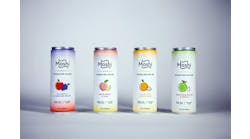Just as those ungainly, 120-lb. console TVs that used to own most of your living room floor space have morphed into sleek, wall-mountable LCD- and plasma-screen affairs, the standard-issue TV dinner has evolved with the times, too.
The phrase “frozen entree” once referred to products that essentially looked — and tasted — like the cafeteria food served at suburban elementary schools in the 1960s. Remember those gray slabs of cold-centered, pre-cooked Salisbury steak? Or the roasted chicken with gravy, mashed potatoes, and wax beans all heated to a mushy consistency under a layer of aluminum foil?
Today, of course, manufacturers have a much better grasp on how to make frozen food appealing from every aspect. Many of the hundreds of options available in the grocer’s freezer are, if not quite what you would expect from a home-cooked meal at Grandma’s farm, nonetheless quite tasty.
Of course, the spectrum of what constitutes a frozen entree has broadened along with the variety. There is now a world of higher-quality alternatives running the gamut between scratch-made, home-cooked dinners on one end of the freshness spectrum and “just nuke it and dig in” on the other.
Time-starved consumers continue to spur growth in the home-meal replacement (HMR) category, typically defined as pre-cooked foods that are either ready-to-heat or ready-to-eat. Back in 2000, the consulting giant McKinsey & Co. presciently predicted “a dramatic change will come in how consumers prepare meals. All generations will increase their dependency on ... fully prepared food from supermarket delis and takeout restaurants, or semi-processed food that requires limited further preparation.”
It’s this key, latter sub-category under the HMR umbrella that appears the most ripe for further exploration. For example, ready-to-cook foods already constitute a portion of the offerings in the elegant display cases at upscale supermarkets such as Whole Foods Market, Austin, Texas, and Wild Oats Natural Marketplace, Boulder, Colo. and even at more mainstream supermarkets. Some smaller chains, such as the EatZi’s Market and Bakery, Dallas, specialize in ready-to-cook and HMR to great success.
Still, compared to Europe, the ready-to-cook market in the U.S. still faces growing pains. We have lagged far, far behind Britain for years now. The research firm Mintel International estimates the market for such foods last year reached £567 million, or about $1 billion, and sales in the category roughly doubled in the short time between 1999 and 2004.
In a nation where working moms and dads often confess to feeling guilty about serving frozen dinners, reheated entrees or takeout meals to their families, it’s no mystery why ready-to-cook is ready to explode Stateside. When it comes to bridging the gap between a labor-intensive, scratch-made dinner and the hands-off takeout alternative, few options do the job as well as a piece of pre-marinated flank steak that simply requires a hot pan or broiler and a few minutes to prepare. Or, the job could be neatly filled by a pre-portioned, preseasoned skewer of raw chicken and vegetables that’s ready to pop straight onto the grill.
The lion’s share of the work associated with cooking most meals from scratch involves gathering ingredients, preparing seasoning combinations, slicing, dicing and otherwise getting each individual component ready for cooking. So there is a clear opportunity for manufacturers and grocers to remove the most time-consuming aspects of this process while affording consumers all the satisfaction and sensory benefits of “cooking” their own food at home.
The mind-set is already there, too. Research shows the current generation considers such minimally involved cooking as constituting a “home-cooked” meal.
The key to the superiority of previously uncooked food is, quite simply, its rawness. Presuming you begin with the same basic source material, foods that aren’t subjected to heat two or more times will invariably outperform reheated counterparts in the moisture, texture and flavor departments.
Of course, creating a wealth of successful, ready-to-cook products will require companies to find practical solutions to the shelf-life challenges these foods inherently pose. The Center for Culinary Development (CCD) has looked to Europe for some answers. So convinced is the CCD that ready-to-cook is the wave of the future, it recently launched its own line of microwavable pasta and fresh vegetable entrees under the SteamCuisine brand, which is now in the testing stage at several California grocery outlets.
A self-venting packaging technology developed overseas effectively permits ingredients to be steam-cooked under plastic, and the results have been praised as outstanding.
Currently, no major manufacturers have unveiled something similar on a national scale. Jennie-O has developed oven-ready, frozen whole turkeys, but with the exception of those ubiquitous fresh-pasta packets and perhaps a handful of other examples, larger packaged-foods companies have yet to fully embrace the ready-to-cook market as quickly as they’ve moved to satisfy consumers’ appetites for the “nuke-and-eat” category meals. But as more U.S. families discover the pleasure and convenience of ready-to-cook meals, it’s a good bet demand will surge accordingly. So set your stovetop timers and preheat the oven; ready-to-cook is coming on strong.


